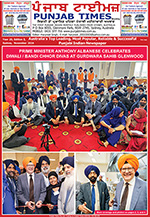Webb Space Telescope captures the Ring Nebula in mesmerizing detail
The James Webb Space Telescope (JWST) captured extraordinarily detailed images published today of the Ring Nebula. The gaseous cloud, also called M57 and NGC 6720, contains 20,000 dense globules rich in molecular hydrogen. It sits about 2,500 light years away from Earth.
The first image (above) was taken with the NIRCam (Near InfraRed Camera), one of the Webb Space Telescope’s primary sensors. It is designed to detect light in the near-infrared spectrum and can capture remarkably detailed images. NIRCam also took the equally hypnotizing updated image of the Pillars of Creation.
Meanwhile, the second image (below) was captured using the JWST’s MIRI (Mid-InfraRed Instrument). It better highlights the nebula’s (roughly) ten concentric arcs beyond its outer edge, likely formed from its central star’s interaction with a lower-mass companion in its orbit. “In this way, nebulae like the Ring Nebula reveal a kind of astronomical archaeology, as astronomers study the nebula to learn about the star that created it,” the European Space Agency wrote in a press release.
The Ring Nebula was discovered somewhat serendipitously in 1779 by French astronomers Charles Messier …read more










